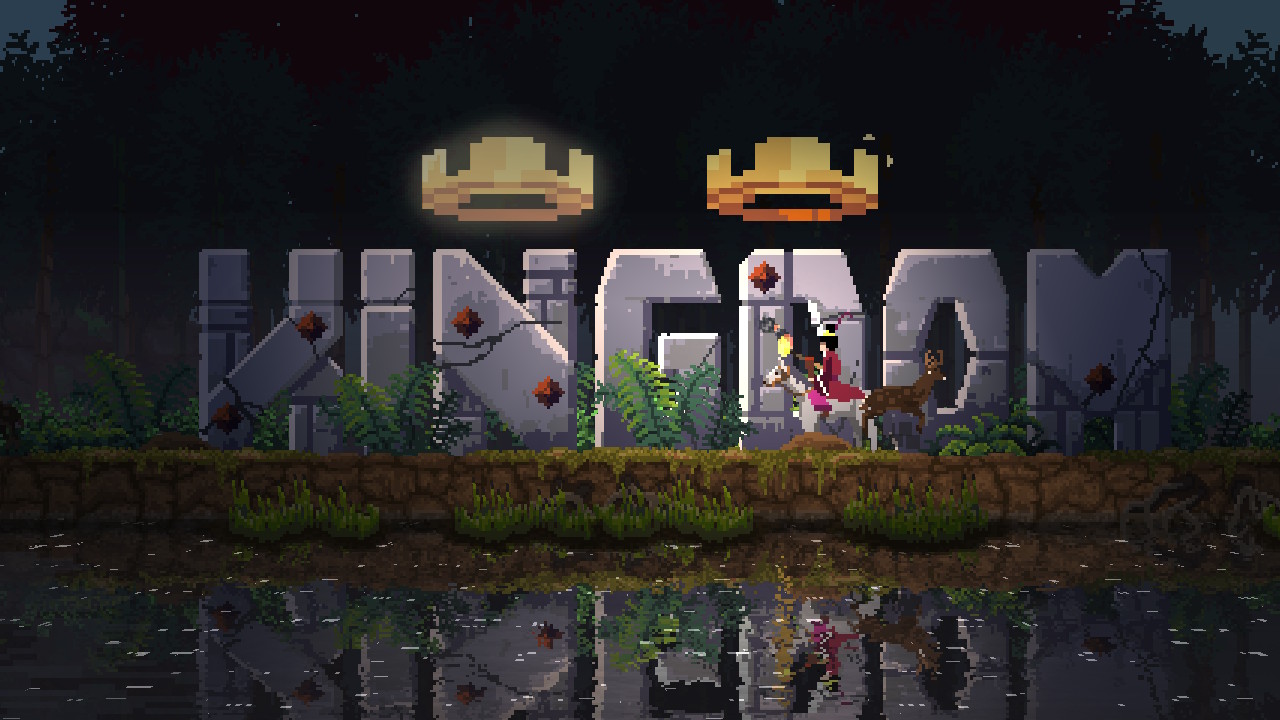[Review] Kingdom Two Crowns – Nintendo Switch
Kingdom Two Crowns
Nintendo Switch
Developed By: Noio
Published By: Raw Fury
Category: Role-Playing, Strategy
Release Date: 12.11.18
A 2D sidescroller would not be my first choice of format for a strategy game; nearly all the strategy games I love are from an isometric perspective; Starcraft, Warcraft, Civilization, and too many Japanese SRPGs to count all set in my mind the expectation that strategy = isometric. For a few iterations now, the Kingdom franchise has been challenging that perception. The latest entry in the series, Kingdom Two Crowns for the Nintendo Switch, is the newest evolution of the series’ formula, boasting a brand-new single player campaign mode, as well as a new kingdom type with some unique units.
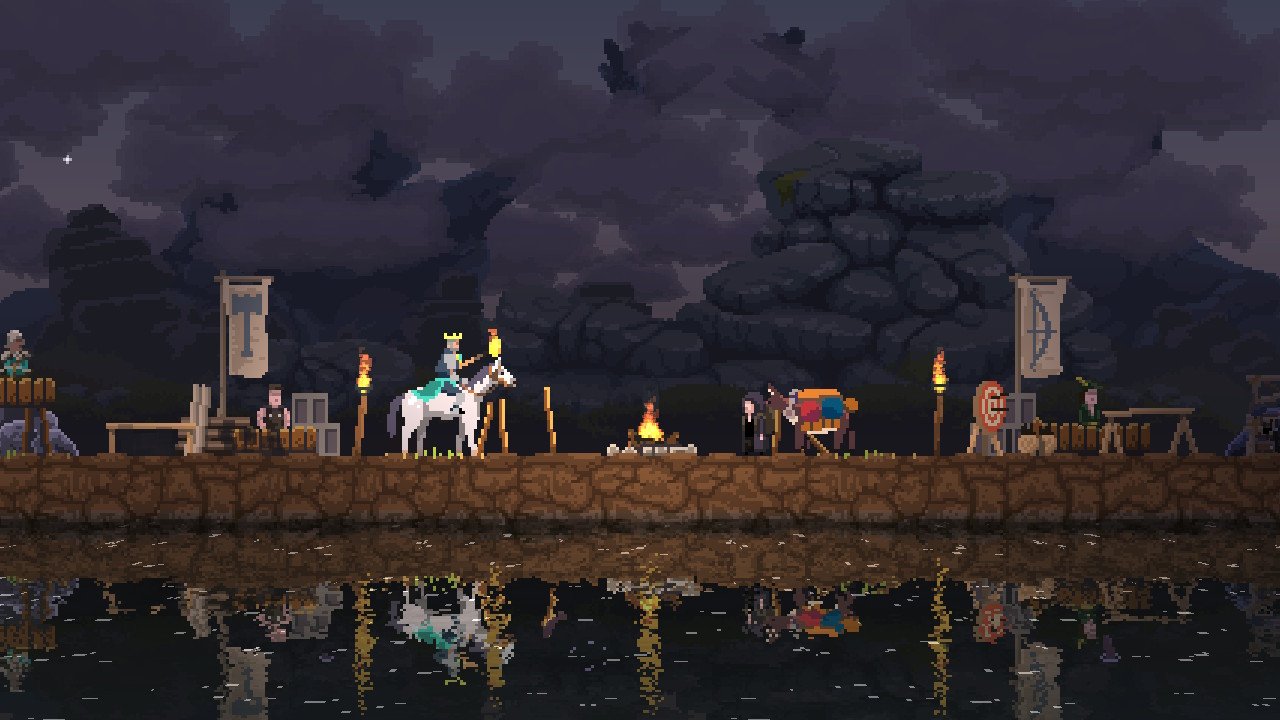
Have Crown, Will Travel
You are the monarch of a kingdom fallen on hard times. You have a crown, a horse, and an empty coin purse. A ghost lady directs you to a campfire, a meager few coins, and some penniless dudes. Now it’s time to build a kingdom. That’s pretty much the whole story; it’s pretty sparse and there is zero dialogue. There aren’t even any characters to speak of, so if you play games for a deep narrative experience, this isn’t the one for you. Luckily, Kingdom Two Crowns is a game of strategy, and the lack of dialogue or really even text of any kind (there is a small prologue at the beginning, and if you die there are some passive-aggressive lines about how you suck before you respawn) is part of the game’s strategic sphere; you have to figure basically everything out on your own.
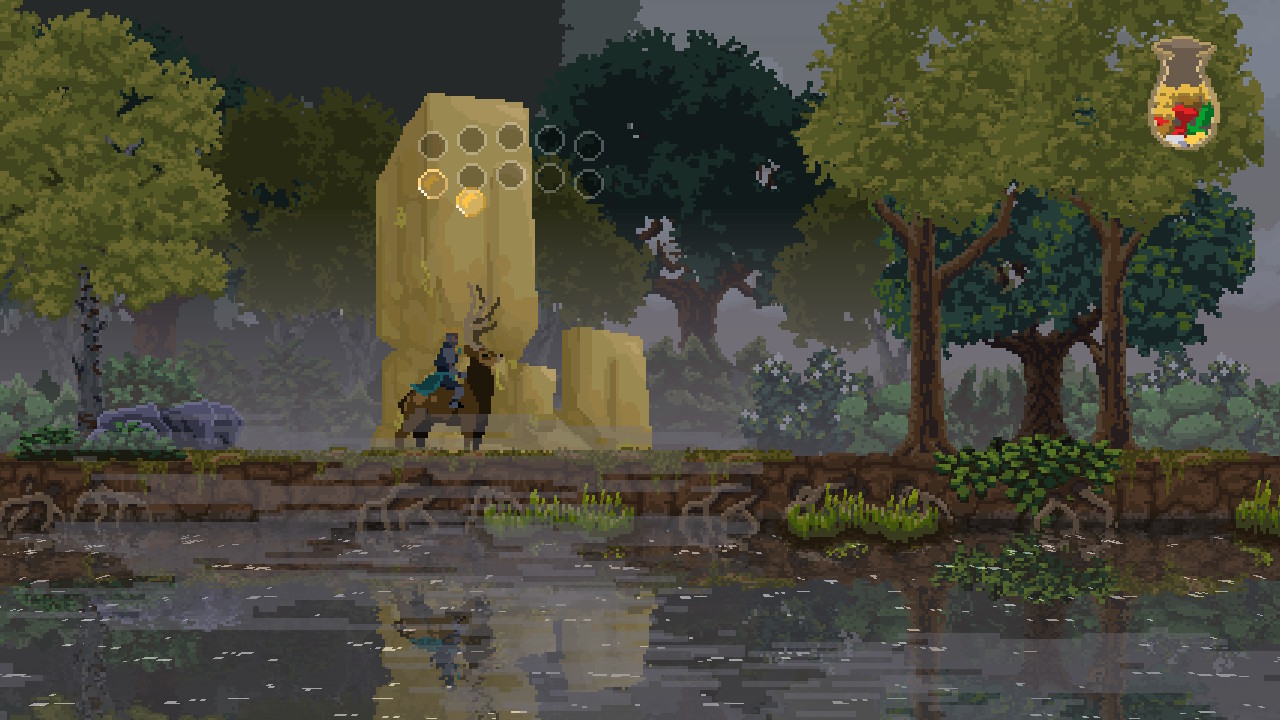
Build, Expand, Defend
This mantra is one of the few lines repeated throughout Kingdom Two Crowns. It is mentioned in the opening, and repeated every time you travel to a new land or respawn. It is the game’s central ethos, but during the course of gameplay, it becomes clear that they’re actually all the same thing. Building new walls to expand your territory and defend it is the most basic way of unlocking new units. As you expand your walls outward, new stalls open where you can buy new items to equip on your citizens. You can unlock new weapons, farming tools, and siege equipment as you expand your walls, all of which will help you in your fight against the monsters that besiege your kingdom every night.
Along the way you can come across camps of beggars where new units will spawn every day; tossing the beggars a coin will turn them into a peasant in your kingdom. They will run to your castle and equip themselves with any tool or weapon you have built for them. You get coins from lots of places; archers will hunt during the day, getting coins for their kills. You can also unlock farms and farming tools, which produce coins every few days. Or you can just stumble across a chest in the woods and coins will spill forth from that. Coins are also used to buy the tools for your peasants to equip or upgrade your structures.
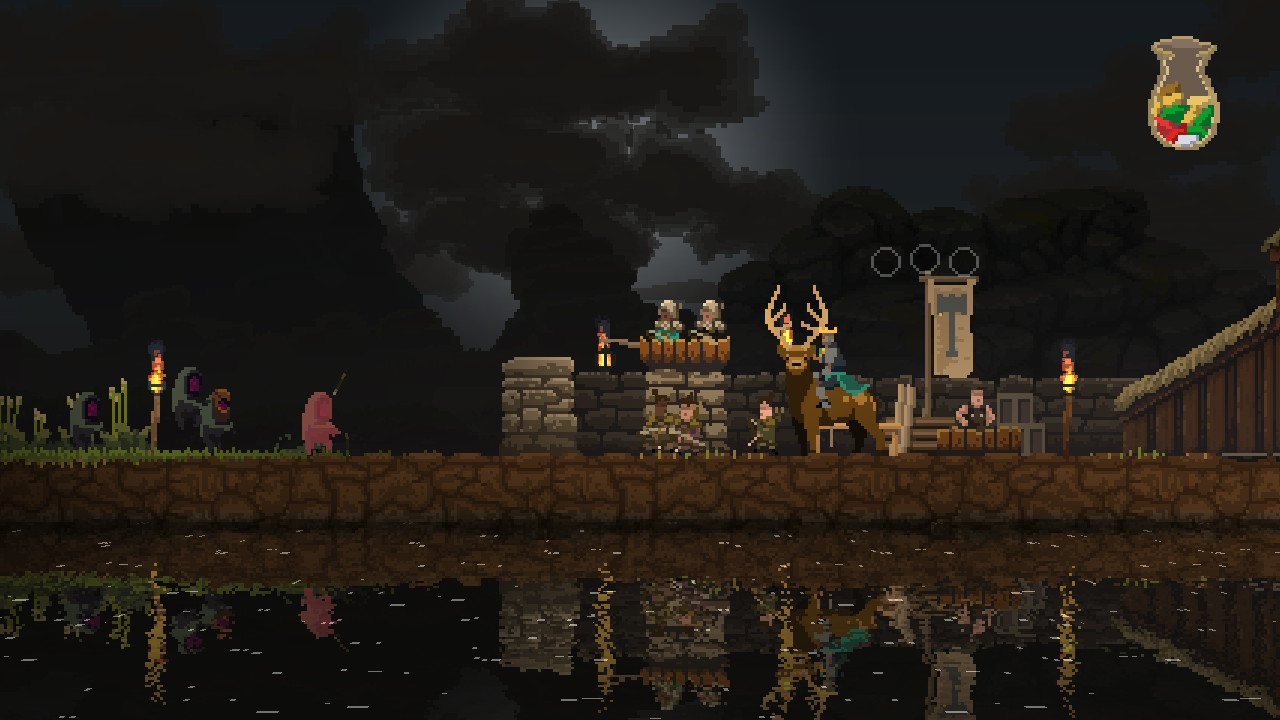
Night Fights
Combat is fairly simple; you can’t directly control any of your units, for the most part, so when you’re under attack, which only happens at night, you pretty much just watch your archers, knights, pikemen, and/or ninjas auto-attack monsters until you win. The monsters have to breach the walls you build before they can get to your units, so you have that advantage. If they do bring your defenses down and hit your units, they can hit your guys two times; the first hit knocks the weapon out of your ally’s hand, making them a peasant again. The second hit knocks the gold coin out of them, turning them back into a beggar. Most monsters, after making the hit, will simply steal whatever they knocked out of your unit and run away.
Eventually you can unlock knight units at your castle, and each knight will recruit up to three archers into his unit. At the edge of your kingdom, there is a flag you can use to direct your knights to attack the portals from which the monsters spawn every night. Attacking and destroying these portals is how you secure an area; once you’ve destroyed all the portals in an area, you can repair a ship and sail to a new area and begin building a new kingdom there. You can build the ships and sail to a new area before taking care of the portals, too, but that’s quitter talk. It’s also necessary; some portals are harder to kill than others, and killing them can only be done after unlocking resources from later islands.
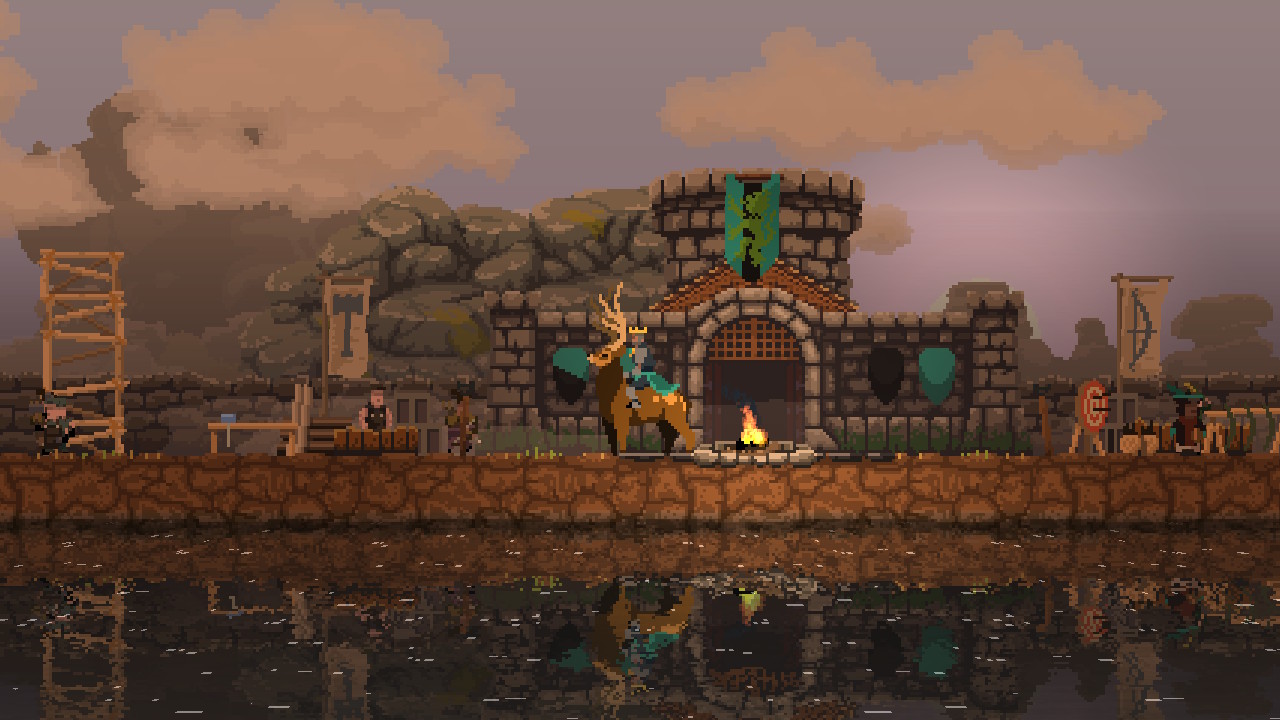
My Kingdom for a Horse! Or a Griffon! Or a Really Big Deer!
Mounts! No one with a pulse doesn’t like unlocking new mounts. Kingdom Two Crowns knows this, and that’s why the feature is included. You start out with a boring grey horse, but you can unlock a number of new mounts with different abilities. For example, the griffon can’t fly, for some reason, but it can use its wings to blow enemies backwards (but not destroy them). Mounts can sprint for short distances, but when they start breathing hard they need a rest and can only walk for a while until they recover. More importantly, mounts!
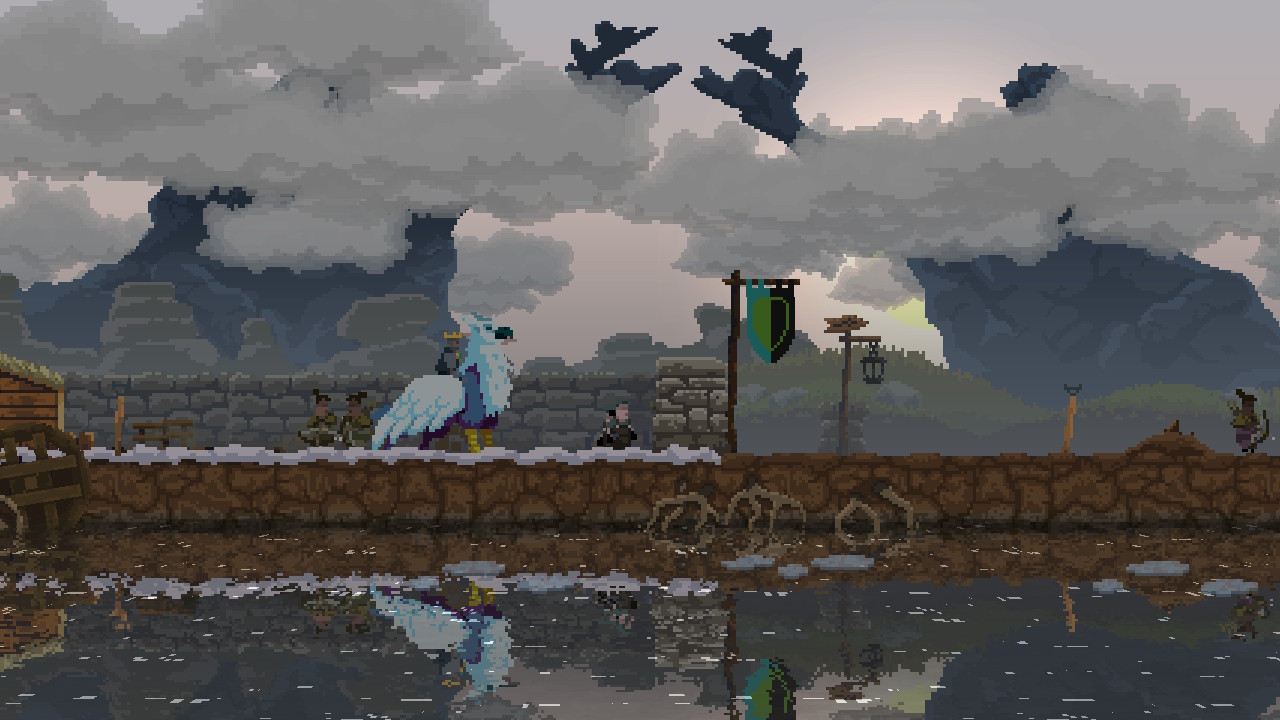
But Don’t Expand Too Far
The trick to expansion is that there are some places in the wilds that you need to keep intact. For instance, if you chop down all the trees around a beggar camp, that camp disappears and you can no longer recruit new units from there. If you destroy all the camps on the map, you simply can’t recruit new units at all on that island; which is bad. There are also hermit traders that live in the wild; if you destroy all the trees around their hut, you can no longer trade with them, which is one of the easiest ways to get coins, and one of the only coin-generating activities that can be done year-round (more on that later). So while it may seem like a good idea to expand quickly and as far as you can, keep in mind that you may stand to lose more than you gain if you expand too far.
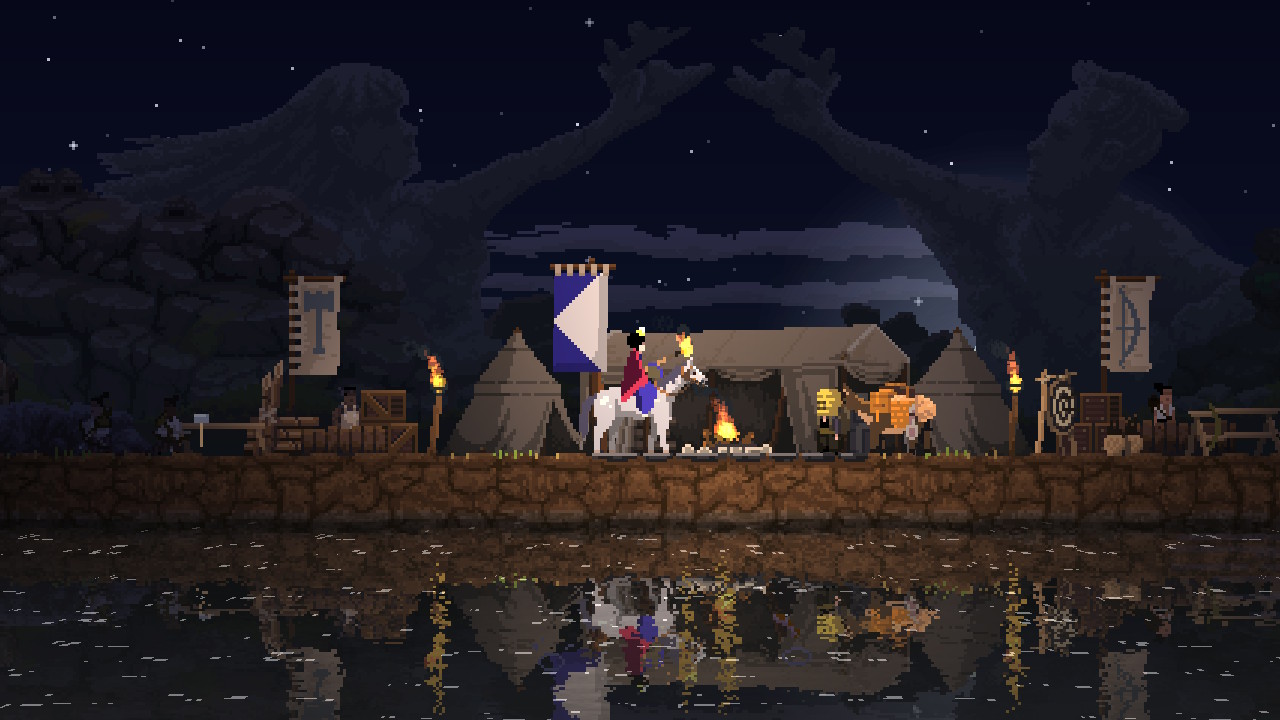
Different Kingdoms, New Units
One of the elements introduced in Kingdom Two Crowns is the concept of different kingdom types. The default kingdom is a medieval European inspired aesthetic; it’s the basic kingdom, and the same type of kingdom that appeared in the first two iterations of the Kingdom series. Two Crowns introduced a Japanese style kingdom in a day-one DLC pack, and intends to add more as DLC in the future. The new kingdom has different architecture and the units look different, but it also has a new unit. The pikeman from the base game is replaced by a ninja, which is a mixed blessing. On the one hand, pikemen use their weapons to gather fish and generate coins, so you lose a revenue source. On the other hand, ninjas! They hide in the shadows at night and wait for the horde of monsters to pass them, and then pick them off from behind with katanas and shuriken. Hard to say if it’s a fair trade overall, but you definitely feel it during the winter, which leads us to…
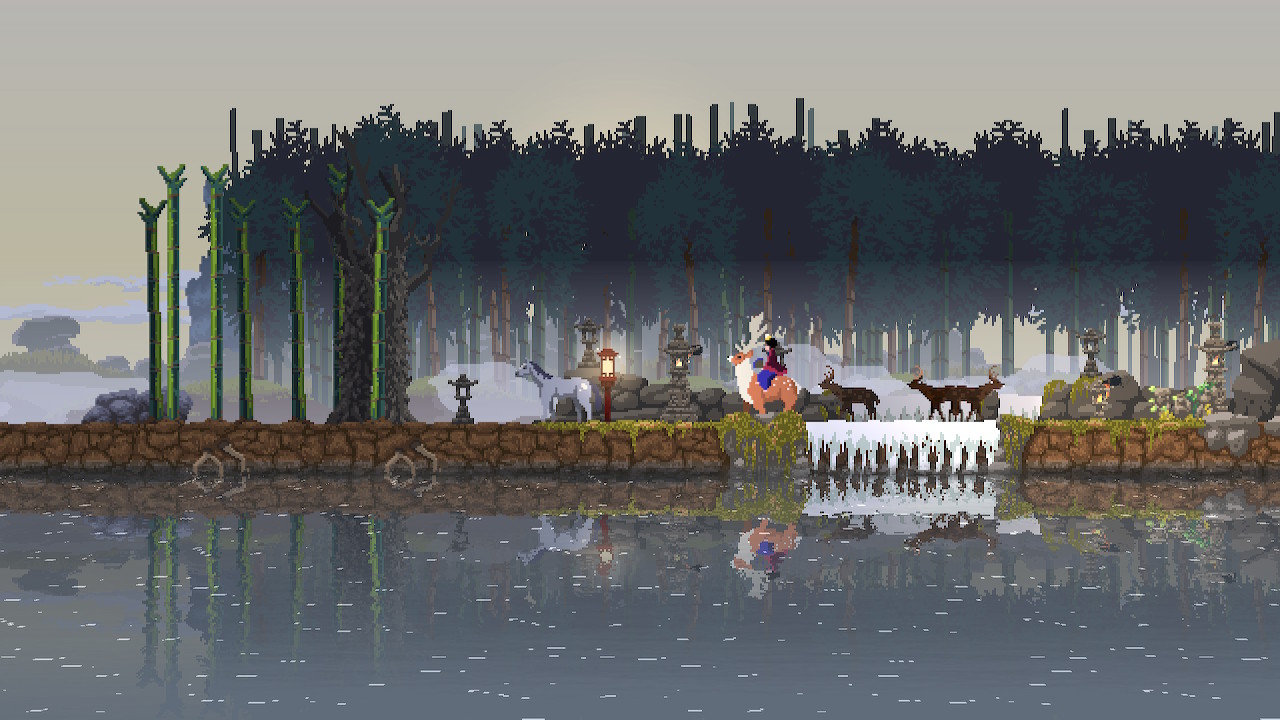
Seasons Change
Kingdom Two Crowns has a cycle of day and night, and the tasks of each time are distinct; day is the time to gather coins and start construction projects. Night is the time to hunker down and wait out the nightly siege. In addition to day/night cycles, there are also seasons. Seasons are aesthetically different but functionally they are basically the same, except winter; which is understandably the harshest season. Fall, summer, and spring all affect farming and hunting slightly differently, but at the end of the day you can still perform those two functions. During winter, farms are frozen over and animals will not spawn to be hunted. This severely restricts your ability to generate money; in the default kingdom type, your pikemen will still fish, and in both you can trade with the hermit merchants, but your ability to generate cash suffers a lot during the winter. Make plans for it beforehand.
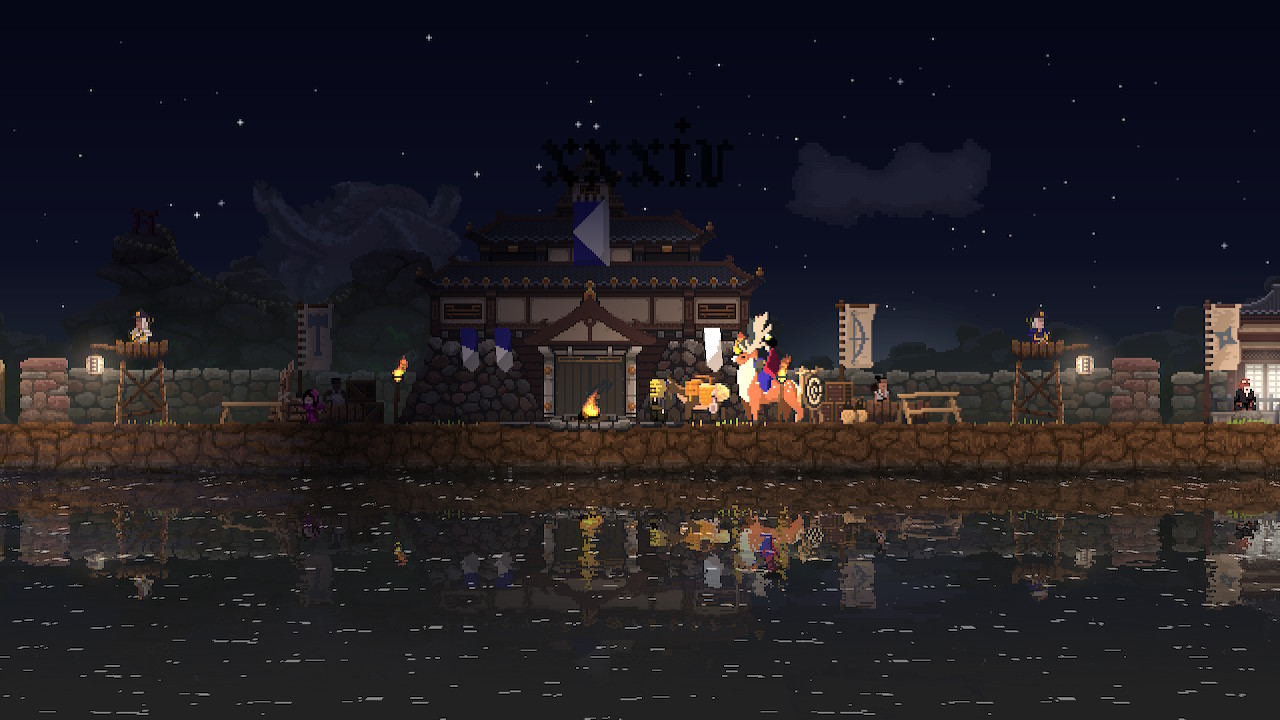
It Seems Like A Kingdom Would Have More Treasury Space Than One Bag
One of the more frustrating parts of the game’s strategy is money management. Your monarch has a bag, and that’s it; you can only hold however much money fits in that one bag. If you overfill it, the coins will slip out and fall either on the ground or into the river where they are lost forever. Your units can recollect coins on the ground so you can return to them once you’ve spent some money to make room, but it just seems like a waste to let all that money fall in the river. I mean, you build a big main fort and castle, doesn’t it have a treasury? Can’t you store some money in there for later, like any sensible person? Or, heck, I dunno, maybe use all the resources you’ve gathered to build another bag? I know it’s just a game mechanic, it doesn’t have to make perfect sense, but it just seems to me that there’s a better way to handle it.
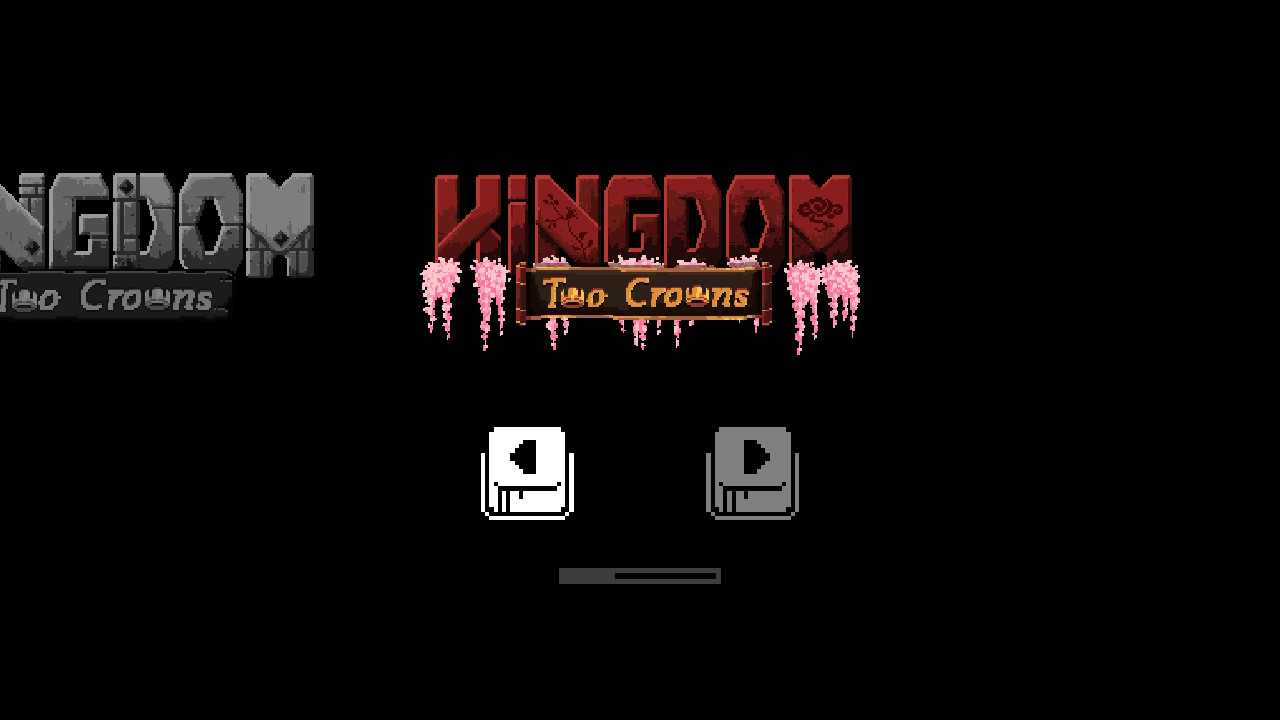
The Waiting is the Hardest Part
Strategic thinking, critical analysis, and resource management are all useful skills to have, but patience is the most crucial element of mastering Kingdom Two Crowns. If you need more workers to expand, you have to wait for them to spawn. If you don’t have the money to re-equip units that lost their stuff to the monsters, you have to wait for your units to generate more. If it’s winter, you have to wait even longer. Destroying portals is a long and arduous process; it will take multiple attacks across multiple days to finally get the job done, and you will probably have to re-equip or re-recruit a fair number of units to do it. Even travelling across the screen to get to where you can launch an attack takes time. The pace of the game is generally pretty relaxed, but it can sometimes be so slow as to be a tedious grind. During these times the gameplay experience suffers a little, but overall the gameplay is solid and interesting.
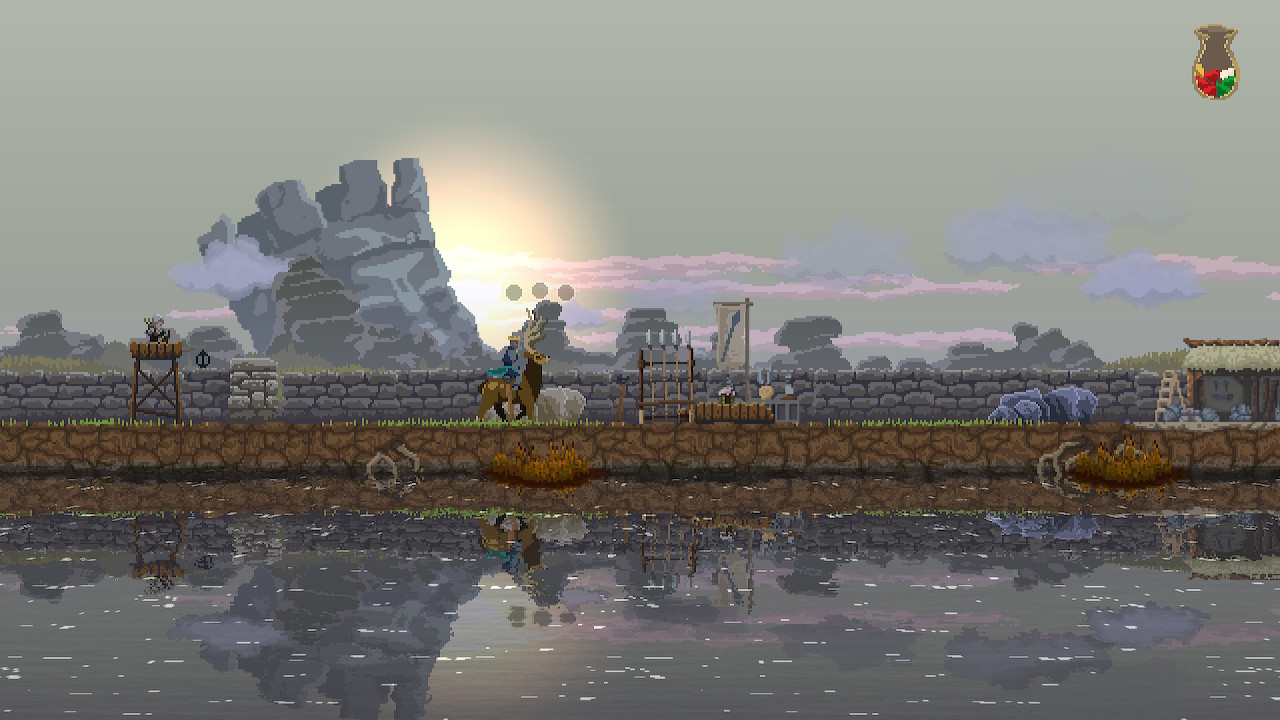
Co-Rulers Doesn’t Really Seem Like a Monarchic Idea
The campaign can be played cooperatively either online or locally. I couldn’t really test this feature of the game out because I don’t know anyone else who has it, and the online feature is still pending on the Switch. But it did pique my interest. Having two people could cut down a lot on travel times, as well as be more useful for expansion and defense. Each person can be responsible for expanding and defending one side of the kingdom. I don’t know how resource management would work, but I assume there is some way to share. I can’t definitively say how the multiplayer works in action, but there’s a lot of intriguing possibilities inherent in the idea.
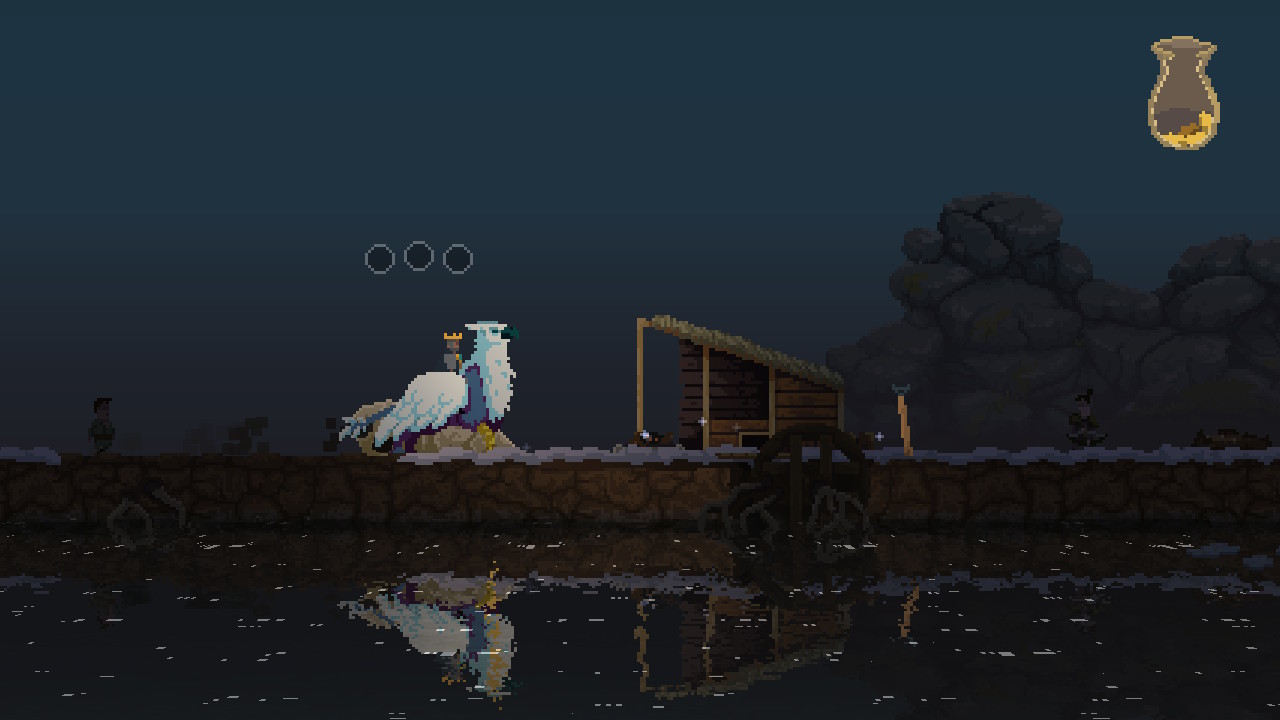
All That Glitters is Gold
I am continually amazed by how developers are able to wring this much detail out of graphics comprised of something as simple as pixels. That the application of one square dot can convey the level of information that it does in Kindgom Two Crowns is nothing short of visual wizardry. The game offers no explanations of itself, and yet the visual cues, despite their minimalist designs, lead players to understand their meanings. A small collection of dots is instantly recognized as a poor man, his hands held out for want of coin; suggesting that doing so would be rewarded. The scenery is gorgeously rendered, and reflected in the river that runs along the entirety of every map.
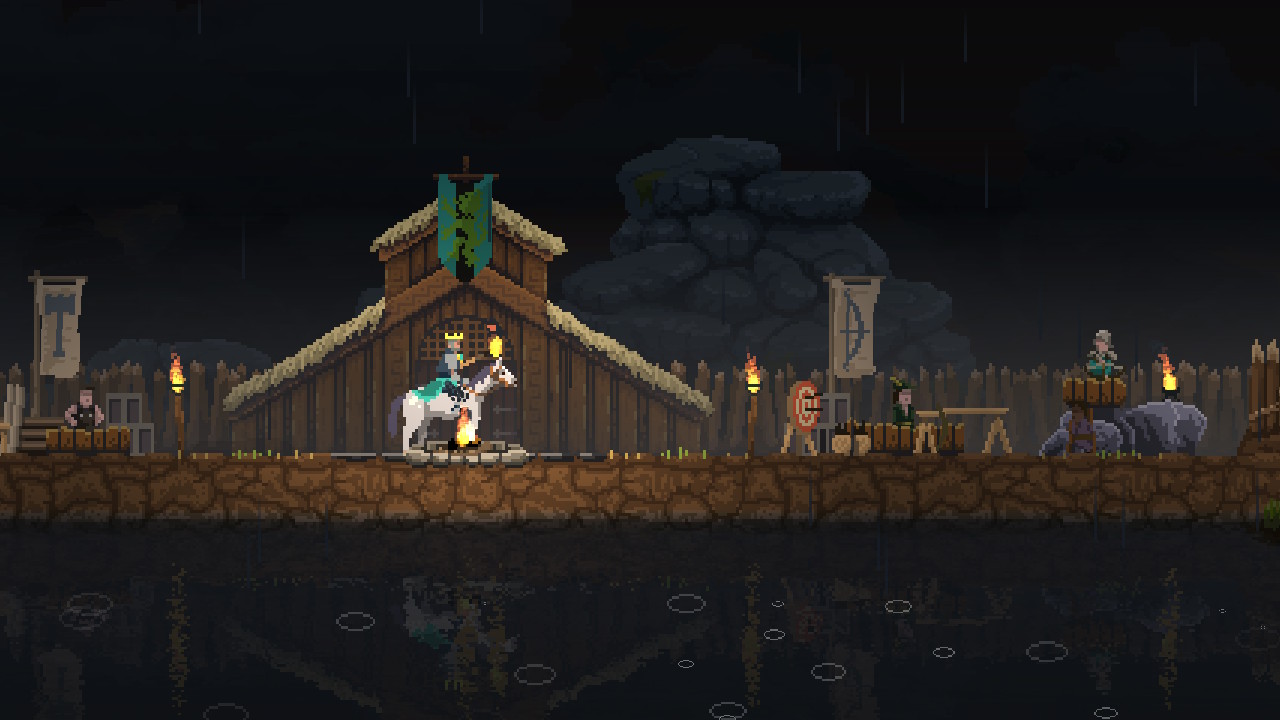
Ambience is King
The audio in the game is likewise fairly simple, but well designed. The music is ponderous and still, accommodating the thoughtful, patient approach necessary for success. The quiet, pleasant lilt of the melodies that comprise the soundtrack are perfectly in tune with the passive nature of the game’s strategy. The sound design also offers some gameplay cues;when your mount is getting tired, you’ll start to hear it snort or grunt. When you hear this sound, you learn to let up on your horse and slow to a walk for a while until the sound stops. It’s just a great example of how to use something other than words to teach your players how the game works.
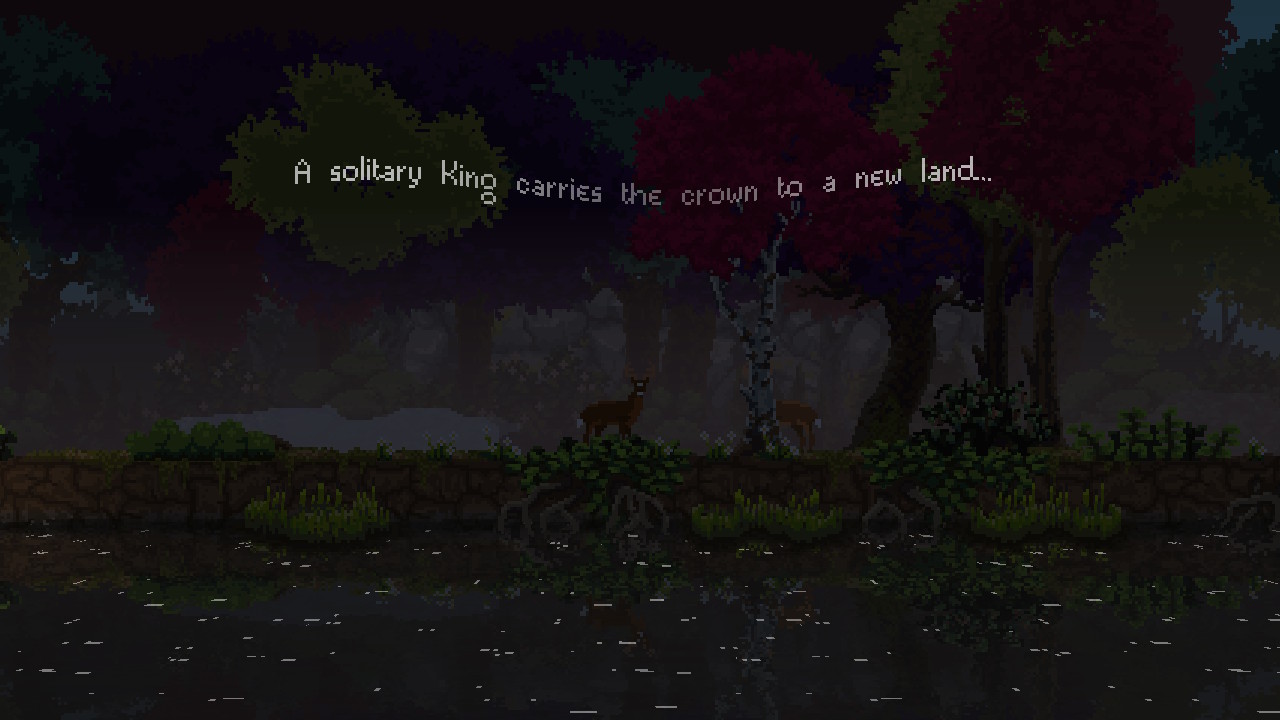
Playability
Kingdom Two Crowns has no touch or motion controls, so you can play it docked or undocked as you prefer. The graphics were breathtaking on a big TV screen, so I recommend playing docked for at least a little while just to experience that. But it is a simple game to pick up and play, so it’s perfect for players who like to play undocked on the go, too.
TL;DR: Gorgeously designed, deceptively deep strategy game with what some would call slow gameplay, but I prefer to call it “thoughtful.”






